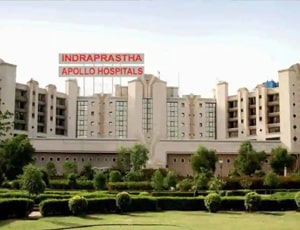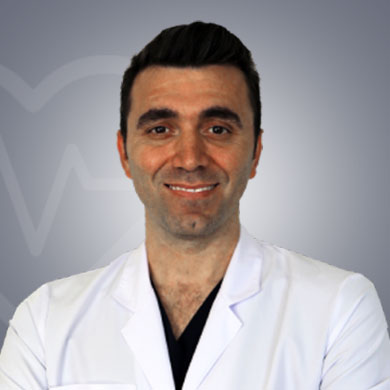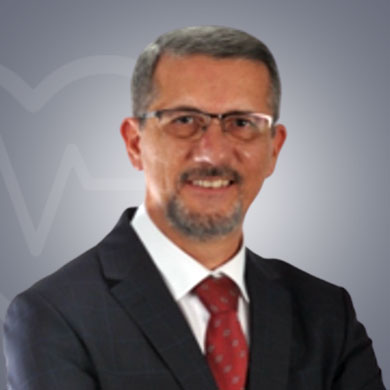Laryngectomy refers to the surgical procedure by which the larynx, commonly called
Laryngectomy is a serious, complex, and major surgery that requires careful monitoring and must be performed under the guidance of an experienced surgeon. This radical procedure is warranted in cases of patients suffering from:
Laryngectomy for laryngeal cancer treatment, throat cancer treatment, or any other disorder is a tedious procedure that typically takes between five to ten hours to complete. Therefore, the surgeons first have to make sure that the patient is fit to undergo the surgery and there is less risk of any complications.
For the same reason, the patient is made to undergo certain diagnostic tests, including routine blood tests and physical exam. In addition, they are advised to stop smoking days before the actual date of surgery and also stop taking any medications.
The night before the laryngectomy procedure, the patient is advised not to take any meals or drink anything after midnight. In addition, they are advised to take the drugs prescribed by the doctor before the surgery.
It is important for the patient to let their doctor know if they are pregnant or if they are taking any medications, drugs, supplements, or herbs as a part of previous treatment.
During the laryngectomy procedure, the doctor may decide to remove entire larynx or just a part of it, depending on the extent of damage and the condition of the patient. The doctor may even decide to remove a part of the pharynx during the same procedure. A pharynx is a passage between the oesophagus and nasal cavity. The surgeon first makes a slit in the throat of the patient to expose the larynx and the surrounding tissues, which are then removed along with it. In some cancer cases, the surrounding lymph nodes are also removed.
This step is followed up with
Tracheoesophageal Puncture (TEP)
Tracheoesophageal puncture (TEP) is a special procedure, typically conducted along with laryngectomy. During this procedure, a hole is created in the oesophagus and the trachea. After the hole has healed, a prosthetic voice box is attached there so that the patient is able to speak again.
Laryngectomy is a radical procedure and it requires the patient to stay in the hospital at least for a few days after the procedure. The patient spends the initial two days after the surgery in an ICU, wherein all the vital parameters such as heart rate, breathing rate, and blood pressure are carefully monitored. The patient is unable to eat anything until the wound in the throat completely heals. The patient gets all the nutrition through a feeding tube. The neck may remain painful for many days and medications are given to manage pain and swelling.
The patients are advised to move around a bit to prevent blood clots from building up. In addition, special care is needed to prevent stoma from infection as potentially harmful viruses and bacteria can enter the body through this newly created opening in the throat. It takes a long time for the patient to adjust to the changes in their throat and neck after the removal of their voice box. In the absence of a TEP, the patients are advised to consult a counsellor who can help with non-verbal communication and oesophagal speech.
Just like any other surgery, a patient who undergoes laryngectomy is at an increased risk of suffering from

Delhi, India
Equipped with more than 50 specialty institutes, Indraprastha Apollo was started with the vision of ...more
![]() Private Driver / Limousine Services
Private Driver / Limousine Services
![]() International Cuisine
International Cuisine
![]() Phone in Room
Phone in Room
![]() Online Doctor Consultation
Online Doctor Consultation

Dubai, United Arab Emirates
The NMC Hospital Dubai Investments Park (DIP) is located just opposite to the Green Community in DIP...more
![]() Private Driver / Limousine Services
Private Driver / Limousine Services
![]() International Cuisine
International Cuisine
![]() Phone in Room
Phone in Room
![]() Online Doctor Consultation
Online Doctor Consultation

Singapore, Singapore
Mount Elizabeth Hospital is a multispecialty healthcare facility operated by Parkway Health. The hos...more
![]() Private Driver / Limousine Services
Private Driver / Limousine Services
![]() International Cuisine
International Cuisine
![]() Phone in Room
Phone in Room
![]() Online Doctor Consultation
Online Doctor Consultation

ENT Specialist
Izmir, Turkey
13 of experience
USD 125 for video consultation

ENT Specialist
Istanbul, Turkey
11 of experience
USD 150 for video consultation

ENT Specialist
Izmir, Turkey
28 of experience
USD 150 for video consultation

ENT Surgeon
Delhi, India
26 Years of experience
USD 32 for video consultation
Q: How does a patient breathe after laryngectomy?
A: Laryngectomy cuts off the connection between the trachea (the tube through which humans breathe) and the mouth. Because of no connection between the esophagus and the trachea, the surgeons typically create a hole called stoma during the surgery that acts as a substitute for breathing afterwards.
Q: Can you talk after a laryngectomy?
A: In the case of total laryngectomy, the voice box is completely removed. Therefore, you are not able to talk using your vocal chords any longer.
Q: What are the early signs of laryngeal cancer?
A: A persistent and long-lasting cough, throat, earache, difficulty in swallowing, hoarse voice, and swelling or lump in the neck are some of the early signs of cancer of the larynx or voice box.
Q: What is a voice prosthesis?
A: A voice prosthesis is an artificial device that is used in combination with speech therapy to help a patient who has had laryngectomy to be able to speak again.
Q: What are the chances of surviving throat cancer?
A: The 5-year survival rate in case of early laryngeal cancer is around 85 percent, while that of late-stage cancer is around 35 percent.